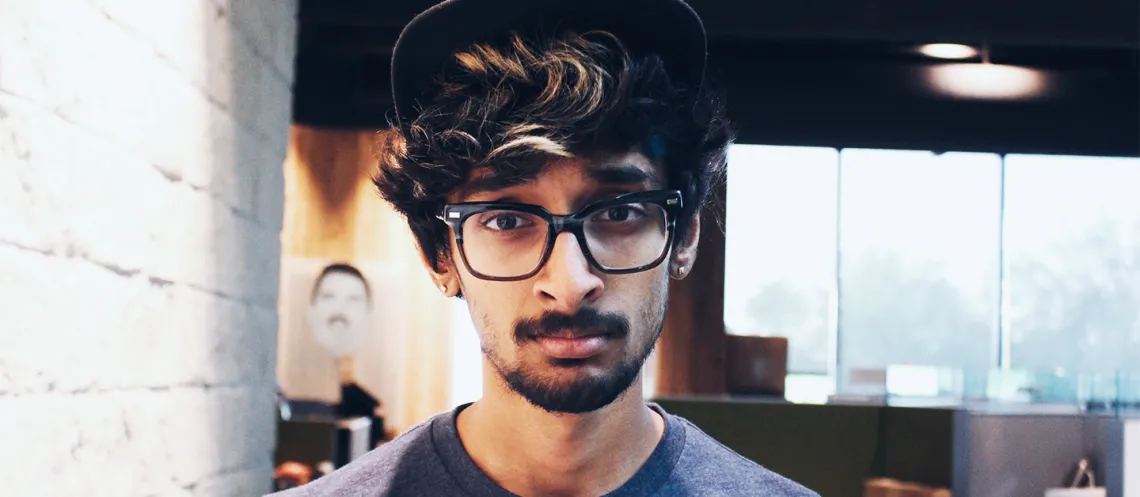
Startup Central is a series that spotlights entrepreneurial-minded alumni who are doing everything from founding startups to helming small businesses.
Viputheshwar Sitaraman’s best advice for University of Arizona students and alumni looking to embrace the difficult path of entrepreneurship? Fail. And fail again.
A glance at Sitaraman’s resume seems to reveal few failures. Just after graduating from the UA at 18 years old, with a bachelor’s degree in molecular and cellular biology, Sitaraman raised a round of venture capital. His brainchild was Explica, a news and entertainment platform targeting millennial and Generation Z consumers by conveying information visually.
That said, not all of the decisions he made put him on the path to early success. If you plan to start a company, Sitaraman says, whether it’s something new or time-tested, there will be some degree of trial and error. “All great ideas are born through iteration and experimentation,” he says.
“Choose and track measurable outcomes — but remember thoughtful decision-making requires both data and intuition. The more thorough your analysis and experimentation and the thicker your skin, the faster and easier your path to success will be. Of course, this is easier said than done.”
A New Kind of Digital Media
With Explica, Sitaraman hoped to solve a problem. “The goal was to create a digital storytelling platform that empowers writers and engages readers,” says India-born Sitaraman, who was named to the Arizona Republic’s list of 35 entrepreneurs under 35. “It solves operational inefficiencies in creating engaging digital content by bridging the gap between creative and editorial.”
Sitaraman’s big idea was to create and publish visual content in the form of animations and infographics, covering controversial topics in everything from sports to politics. With this innovative approach, Explica was able to draw early traffic and interest from private equity, technology investors excited by Sitaraman’s vision.
“The goal was to create a digital storytelling platform that empowers writers and engages readers.”
Entrepreneur by Chance
The roots of Sitaraman’s experience in digital creative and storytelling go back to his youth, but he never considered them professionally until much later. “I always toyed with graphic design,” he says. “I've been playing with Photoshop for over a decade. But back then, designing was mostly a pastime — customizing my operating system, building icon sets, creating school T-shirts. It was only when I applied my novice design skills to presentations that I realized the incredible advantage of communicating with well-crafted visuals.”
In high school, Sitaraman started a blog called Draw Science. “I started it the year before enrolling at the UA, shortly after attending the Intel International Science and Engineering Fair,” he says. “My poster had caught the eye of a judge, Winston Vuong. I always loved to create highly diagrammatic presentations. Winston spoke to me about science communication — a field I had never heard of before, and thus Draw Science was born.”
The Rising Business of Viral Infographic Content
Sitaraman had been developing infographic-based media concepts for a long time before he started a company. “I had been working on Draw Science for a couple years by the time I graduated from the UA, but I really wanted to take what I had learned and build a scalable, venture-backed startup company,” Sitaraman says.
“Draw Science and a bit of consulting were really the only items on my résumé at the time other than some wet-lab research — not to mention that I was a single-founder and 18 years old.”
His side project, however, became the basis of his acceptance to Seed Sumo — a group that from 2013 to 2016 invested in 23 companies, helping to incubate them over 100 days on-site in Texas. Three days after the school year ended, Sitaraman flew to Texas to begin his time with Seed Sumo, and the idea for his next endeavor, Explica, was born.
Writing the Next Chapter
Sitaraman has moved on to his next challenge, having left his day-to-day responsibilities as CEO of Explica. “I currently work as a creative consultant to organizations around the world — ranging from Fortune/Inc. 500 companies to Series A startups — helping communicate complex ideas and messaging through visual storytelling.”
It’s this vision for communicating in our increasingly digital world that earned Sitaraman an invitation to speak about the dangers of the science-opinion gap at a recent TEDx event. After all, how better to illustrate the differences between science and opinion to today’s audiences than with the power of visual storytelling?
